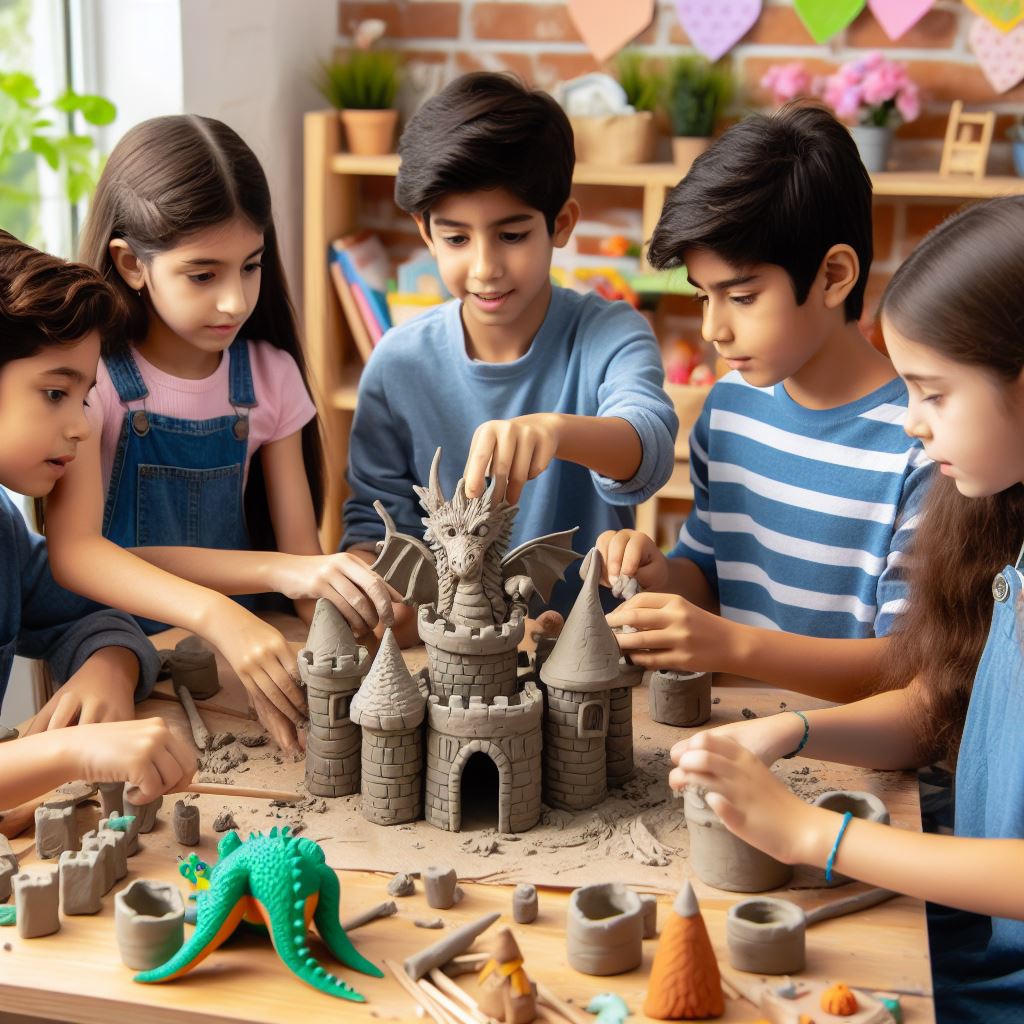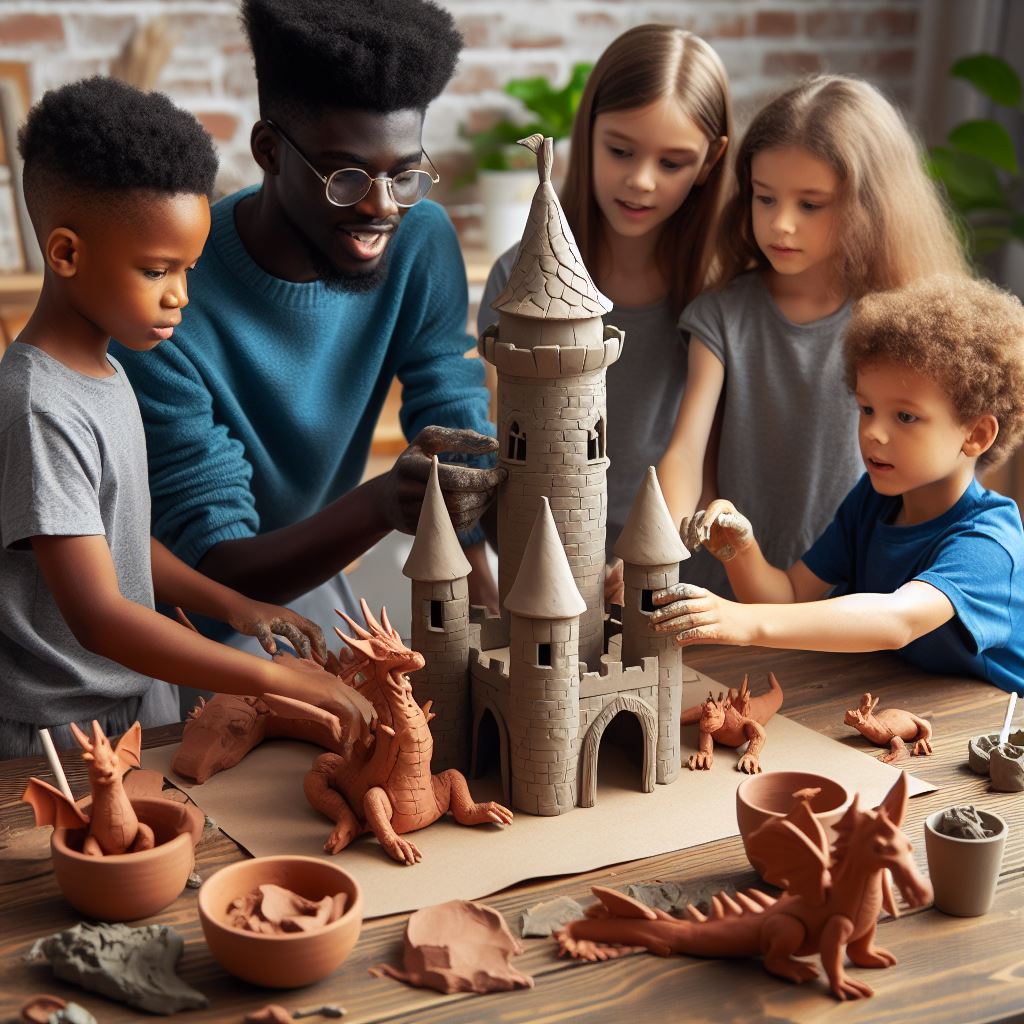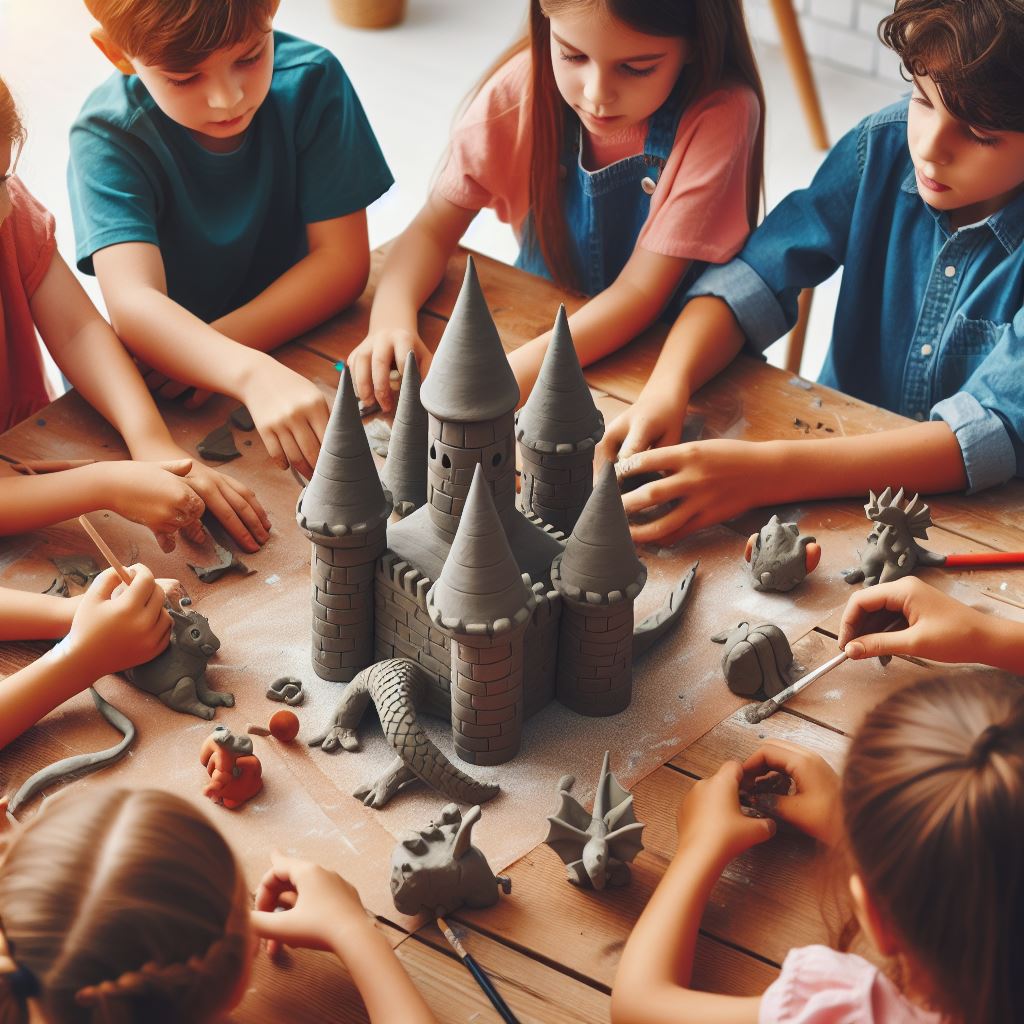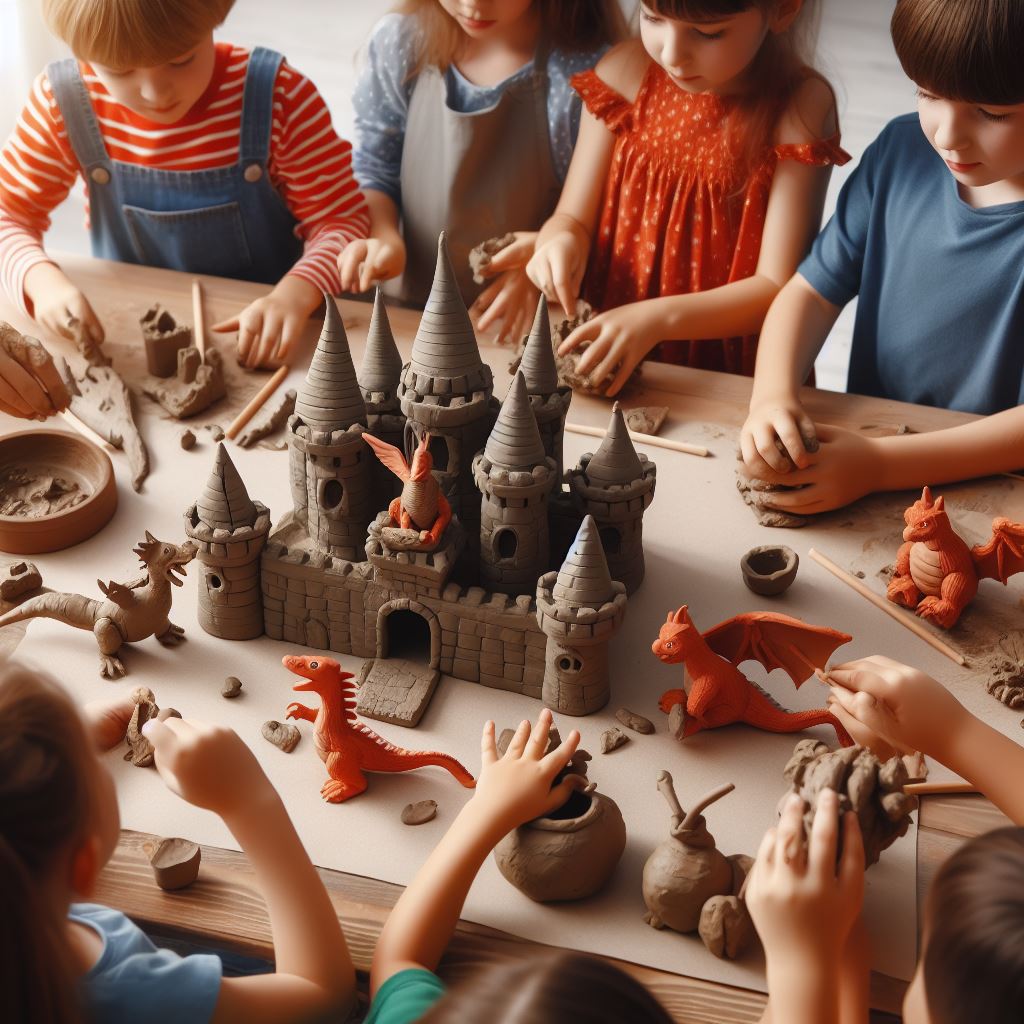Table Of Contents
- 1 Shaping Relationships: Sculpting with Clay for Social Skills and Teamwork in Children
- 1.1 Building Bridges: How Clay Sculpting Fosters Social Skills and Teamwork
- 1.2 Shaping Together: Techniques and Activities for Building Social Skills and Teamwork
- 1.3 Recap and FAQs on Clay Sculpting for Social Skills and Teamwork
- 1.4 Key Takeaways:
- 1.5 FAQs:
- 1.5.1 1. At what age can children start participating in collaborative clay sculpting activities?
- 1.5.2 2. What type of clay is best for collaborative projects?
- 1.5.3 3. How often should children engage in collaborative clay sculpting activities?
- 1.5.4 4. How can I adapt clay sculpting activities to address specific social or emotional challenges in children?
- 1.5.5 5. Where can I find resources and support for incorporating collaborative clay sculpting activities into my child’s routine?
- 1.6 Conclusion
Shaping Relationships: Sculpting with Clay for Social Skills and Teamwork in Children

In today’s digital age, where virtual interactions often take precedence, fostering strong social skills and teamwork in children can sometimes feel like an uphill battle. However, there’s a simple yet powerful tool that can help children navigate the complexities of human interaction: sculpting with clay.
This engaging activity transcends the realm of mere art creation. It offers a unique platform for children to learn and practice valuable social skills, build strong team bonds, and cultivate a sense of collaboration. As they work together to mold and shape the clay, they embark on a journey of social and emotional growth that benefits them both in the classroom and beyond.
In the coming sessions, we will delve into the fascinating world of clay sculpting and its transformative impact on children’s social and emotional development. We will explore:
- The neurological and developmental benefits of clay sculpting for social skills and teamwork.
- Specific techniques and activities that foster collaboration, communication, and problem-solving.
- The role of play in promoting social-emotional learning and building strong relationships.
- Tips for creating a supportive and inclusive environment for clay sculpting activities.
By the end of this exploration, you’ll be equipped with the knowledge and tools to empower your child to build strong relationships, navigate social challenges with confidence, and become a valuable team player.
Building Bridges: How Clay Sculpting Fosters Social Skills and Teamwork

In the previous session, we introduced the concept of sculpting with clay as a potent tool for nurturing social skills and teamwork in children. Now, let’s delve deeper into the “how” by exploring the underlying neurological and developmental benefits.
Clay sculpting engages various brain regions responsible for social cognition, empathy, and emotional processing. As children work together on a collaborative project, they learn to communicate effectively, express their opinions, and consider different viewpoints. This collaborative process fosters a sense of shared responsibility, promotes active listening, and teaches them to compromise and negotiate.
Furthermore, the physical act of manipulating the clay together strengthens their fine motor skills, hand-eye coordination, and spatial reasoning. These skills are crucial for successful collaboration, as they allow children to work together efficiently and effectively towards a common goal.
**Beyond the cognitive benefits, clay sculpting provides a safe and engaging space for children to practice social and emotional skills. Through the process of creating together, they learn to:
- Resolve conflict peacefully.
- Develop leadership skills.
- Build trust and empathy.
- Offer and accept constructive criticism.
- Celebrate each other’s achievements.
These valuable social-emotional skills are essential for building strong relationships, navigating challenging situations, and adapting to diverse environments. They equip children with the tools they need to thrive not only in the classroom but also in their personal and professional lives.
Here are some key takeaways from this session:
- Clay sculpting engages various brain regions responsible for social cognition, empathy, and emotional processing.
- Collaborative clay sculpting strengthens children’s fine motor skills, hand-eye coordination, and spatial reasoning, all crucial for successful teamwork.
- Clay sculpting provides a safe space for children to practice and develop valuable social-emotional skills such as conflict resolution, leadership, trust, empathy, and constructive criticism.
Shaping Together: Techniques and Activities for Building Social Skills and Teamwork

Armed with the knowledge of the benefits of clay sculpting for fostering social skills and teamwork, let’s now delve into the practical realm and explore specific techniques and activities that can empower children to build strong relationships and collaborate effectively.
1. Collaborative Sculpting Projects:
- Joint Murals: Divide a large piece of clay into smaller sections and assign each child a section to work on. Encourage them to collaborate and create a unified mural, discussing their ideas and ensuring the different sections flow together seamlessly.
- Group Sculptures: Provide each group with a specific theme or object to sculpt together. Encourage brainstorming, planning, and division of tasks to achieve the final creation.
- Sculpting Games: Play games that involve collaborative sculpting, such as “Blind Sculpting” where one child directs another blindfolded teammate to create a specific object.
2. Communication and Problem-solving Activities:

- “Build a Story” Challenge: Each child sculpts a part of a story based on prompts or a starting point. Encourage them to communicate their ideas and ensure the story flows seamlessly from one creation to the next.
- “Problem-solving Sculptures” Challenge: Present a problem scenario that requires a creative solution through clay sculpting. Encourage teamwork and communication to find innovative and collaborative solutions.
- “Describe and Sculpt” Activity: One child describes an object without revealing its name. The other children sculpt the object based on the verbal description, promoting active listening and clear communication.
3. Role-Playing and Empathy Activities:
- Character Sculpting: Ask children to sculpt characters from their favorite stories or create their own characters. Encourage them to discuss their character’s personality, emotions, and motivations to develop empathy and understanding.
- “Sculpt Your Feelings” Activity: Provide different colored clays and ask children to sculpt their current emotions. This activity encourages self-awareness, emotional expression, and empathy towards others’ feelings.
- “Clay Conflict Resolution” Activity: Present a conflict scenario involving two characters. Each child sculpts one character’s perspective, encouraging them to consider different viewpoints and find peaceful resolutions.
4. Inclusive Activities and Celebrating Differences:
- “Unique Hands” Project: Have each child create a clay imprint of their hand, highlighting their unique fingerprints and hand shapes. This activity celebrates individuality and promotes acceptance of diversity.
- “Sculpting Our Community” Project: Encourage children to sculpt elements that represent their community, showcasing its diversity and the individuals who make it unique.
- “Sharing and Reflecting” Activity: After completing a collaborative project, encourage children to share their experiences, feelings, and contributions. This reflection time strengthens team bonds and fosters appreciation for individual talents and perspectives.
Remember, the key to unlocking the social and emotional benefits of clay sculpting is to create a supportive and inclusive environment. Encourage positive communication, celebrate diversity, and foster a sense of collaboration and shared responsibility. By incorporating these techniques and activities into your child’s routine, you empower them to build strong relationships, become effective team players, and thrive in an increasingly interconnected world.
Recap and FAQs on Clay Sculpting for Social Skills and Teamwork
We have now reached the culmination of our journey through the impactful world of clay sculpting and its remarkable ability to cultivate social skills and teamwork in children. As we close this exploration, let’s recap the key takeaways and address any lingering questions you may have.
Key Takeaways:
- Clay sculpting engages various brain regions responsible for social cognition, empathy, and emotional processing, facilitating collaborative learning and teamwork.
- Collaborative clay projects, communication and problem-solving activities, role-playing and empathy activities, and inclusive projects celebrating individuality are powerful tools to foster social skills and teamwork.
- Creating a supportive and inclusive environment, encouraging positive communication, and celebrating diversity are crucial for maximizing the social and emotional benefits of clay sculpting.
FAQs:
1. At what age can children start participating in collaborative clay sculpting activities?
Children as young as preschool age can benefit from collaborative clay sculpting activities. Start with simple projects and provide plenty of guidance and support. As they grow older, their social skills and collaboration abilities will develop, allowing them to participate in more complex projects.
2. What type of clay is best for collaborative projects?
Air-drying clay is a good choice for collaborative projects, as it allows multiple children to work on the same piece without needing to bake it. Polymer clay can also be used, but it requires baking in an oven, which may be less practical for larger groups.
3. How often should children engage in collaborative clay sculpting activities?
Regular engagement is essential for maximizing the benefits of clay sculpting. Aim for at least one collaborative project per week to foster social skills, teamwork, and communication effectively.
Clay sculpting can be a valuable tool for addressing specific social or emotional challenges when adapted with the help of educators or therapists. They can suggest specific techniques, activities, and modifications tailored to the individual child’s needs.
5. Where can I find resources and support for incorporating collaborative clay sculpting activities into my child’s routine?
Numerous online resources, books, workshops, and art programs offer guidance and inspiration for parents, educators, and caregivers looking to incorporate collaborative clay sculpting activities into children’s lives. Online communities and forums can also provide valuable support and networking opportunities.
Conclusion
By incorporating the knowledge and tools you’ve gained from this exploration, you can empower your child to build strong relationships, develop valuable social skills, and become a collaborative and effective team player. Remember, clay sculpting offers a unique and engaging platform for fostering social and emotional growth, shaping not only their creations but also their future relationships with the world around them.
This concludes our exploration of clay sculpting as a powerful tool for nurturing social skills and teamwork in children. I hope this information has been informative and valuable. Feel free to leave any questions or comments below.
1 thought on “Sculpting With Clay For Fostering Social Skills And Teamwork In Children”